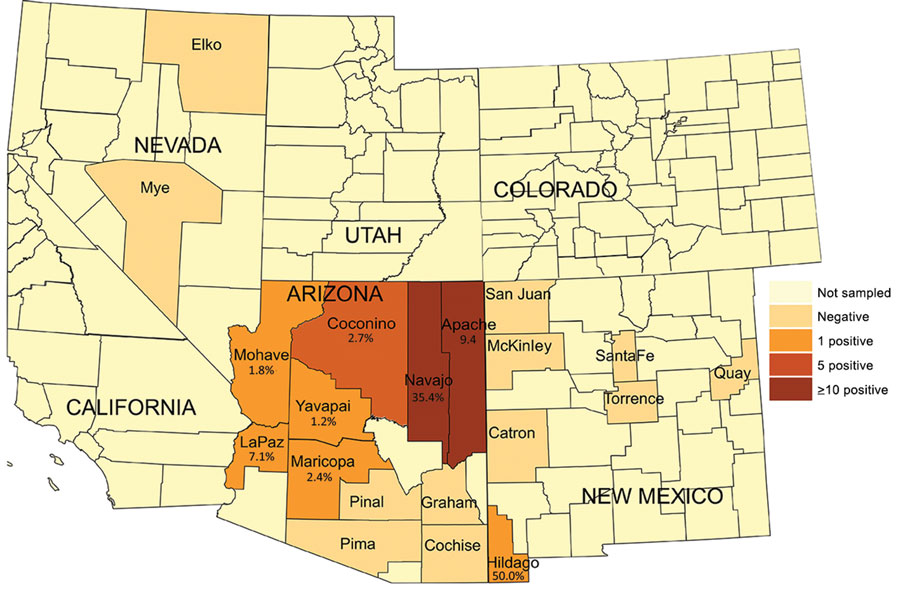Volume 26, Number 12—December 2020
Dispatch
Coyotes as Reservoirs for Onchocerca lupi, United States, 2015–2018
Figure 1

Figure 1. Number of Onchocerca lupi nematode–positive coyotes collected, southwestern United States, 2015–2018. Positivity rates are provided for each county with O. lupi–positive coyotes.
Page created: July 13, 2020
Page updated: November 19, 2020
Page reviewed: November 19, 2020
The conclusions, findings, and opinions expressed by authors contributing to this journal do not necessarily reflect the official position of the U.S. Department of Health and Human Services, the Public Health Service, the Centers for Disease Control and Prevention, or the authors' affiliated institutions. Use of trade names is for identification only and does not imply endorsement by any of the groups named above.